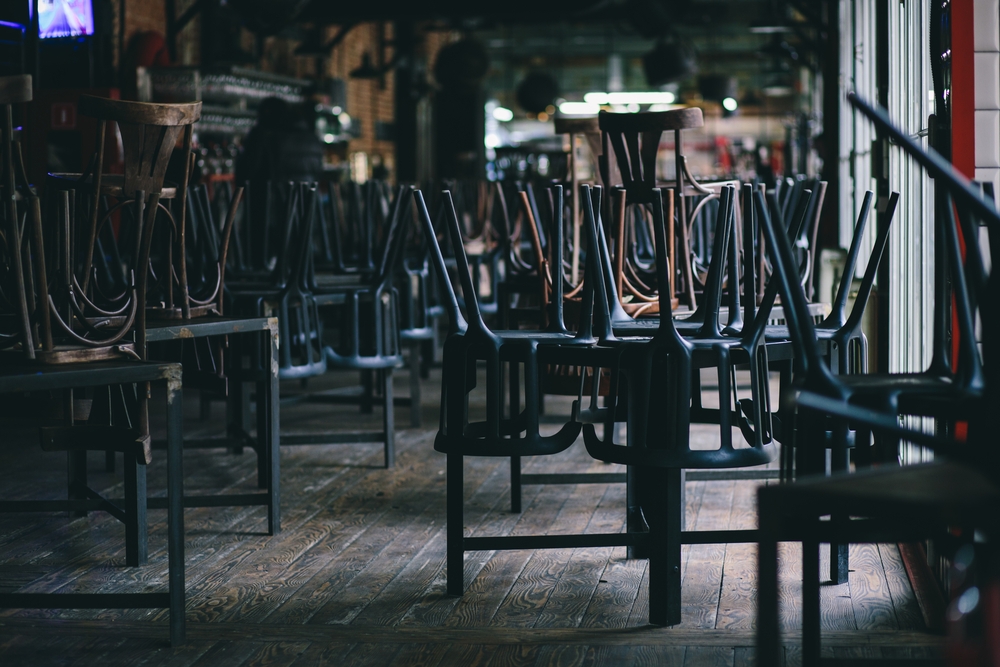
Of all the business sectors impacted by the COVID crisis, the food-service industry has been among the hardest hit. Between March and June, The National Restaurant Association—which represents nearly 500,000 food service establishments—forecasts a loss of $145 billion in revenue, and more than eight million restaurant employees laid off or furloughed at the height of the shutdown. As the National Restaurant Association’s executive vice president of public affairs, Sean Kennedy has his finger on the pulse of the culinary landscape across America. We caught up with Kennedy from his home in Washington, D.C., to share his thoughts on the state of the industry.
How were restaurants doing before COVID?
As we moved into the first quarter of 2020, the signs were encouraging. Spending was up. We thought this would be one of our better years for the industry and that we were fully out of any signs of economic recession. People were not talking about expanding their businesses, but they began the spring of 2020 with optimism that this would be a good starting point for further growth looking into 2021.
And then what happened in mid-March?
On March 14, which was a Saturday, Hoboken, New Jersey, was the first city to shut down dining operations effective at midnight. Suddenly, you have an industry that was literally preparing for St. Patrick’s Day and Mother’s Day that found itself shut down on a nationwide basis.
How many restaurants are projected to shut down permanently?
That’s a really tough question. You have to make assumptions about how long the pandemic will last and what the reopening timeline will be. What everyone is discovering are the lingering effects of the pandemic, particularly in hotspot states in the Sun Belt. That’s led many states to roll those requirements back. Over past two weeks nationwide, the state and local governments have reclosed 100,000 restaurants [which just happened this week in Baltimore City.] Restaurants are not designed with an on-off switch. Restaurants are designed to be in use seven days a week, roughly 14 to 16 hours a day. It’s a very thin profit margin of four-to-six percent and that assumes a full house, particularly a full house in the high season, which is what we’ve been in since March 16. The health consequences of the pandemic have been awful, so I don’t want to appear dull to that, but the timing of this was particularly challenging for restaurants because it is this period when we can afford to save enough money, so that we can afford to stay open with the full contingent of staff in the leaner months when it’s cold outside.
“Restaurants are not designed with an on-off switch. Restaurants are designed to be in use seven days a week, roughly 14 to 16 hours a day.” —Sean Kennedy
Pivot has become the word of the year. How have restaurants pivoted?
What has been really remarkable about this industry is how quickly so many small businesses redefined themselves and their business models literally over a 10-day period. Restaurants that swore they would never do takeout and delivery went back to basics and said, ‘How do we make something that is going to be delicious and enjoyable, and so distinctly identifiable to this restaurant, but can travel through a third-party delivery or can be picked up at a counter?’ It required a lot of innovation. Another thing is cocktails to-go. That doesn’t sound like a big one, but the margins on cocktails to-go are such that for some restaurants that’s almost 20 percent of their monthly revenue. One of the new things this has brought to light is that when people order a takeout Mexican meal, they want to get their favorite margarita prepared by the restaurant.
Are there any other examples of pivots that you’ve seen?
A lot of restaurants are making their menus simpler. They have fewer dishes with fewer total ingredients that the kitchen needs to have. This helps lower costs and increase efficiencies in the back of the house.
What are some of the bigger struggles right now?
Probably the biggest fear we have right now is these restaurants that are being closed down again. It is so capital-intensive to open up a restaurant. At least a third of your costs are perishable goods. If you get it wrong on how many people will walk through your doors or the state shuts you down again, that’s a lot of inventory that literally has to be given to employees for their families or food banks. With four-to-six percent profit margins, you can’t be wrong too many times.
Can you talk about hygiene and safety in restaurants in the age of COVID and its impact on the bottom line?
The restaurant industry has really been at the forefront of hygiene, cleanliness, and safety. We are highly regulated as an industry for food-borne illnesses already. Restaurants pivot quickly on how to deal with airborne viruses like coronavirus, so we have the protocols in place, but the challenge becomes what you do if you are operating at a capacity with restrictions. Your fixed costs like rent remain the same, but now you’re spending more money for things like training and PPE. What do you do with prices? Do you increase prices, or put in a COVID surcharge? Do you reduce the number of people working in restaurants? It has been a challenge for so many restaurant owners.
“If you get it wrong on how many people will walk through your doors or the state shuts you down again, that’s a lot of inventory that literally has to be given to employees for their families or food banks. With four-to-six percent profit margins, you can’t be wrong too many times.”
Is there one type of restaurant that will fare better than another?
If you’re not in a takeout and delivery space, you’re not going to exist. Most high-end restaurants might be able to afford to weather the storm a little longer because they are destinations in and of themselves, but with most restaurants what we are seeing much more of is that they are more attuned to third-party delivery or doing takeout. We know it’s sticking with millennials—we are waiting to see what consumers who are older than millennials are going to do when we are in a post-pandemic world. Will they return to the dine-in experience in the same numbers? There’s a lot of uncertainty right now because even in some communities with the 50 percent capacity, they’re still not seeing full houses. We don’t have the confidence level from consumers that our country needs to have right now.
Are there any other trends you’re seeing in the industry right now?
The other trend we will see is smaller footprints from a real-estate perspective. Smaller might be better. You’re going to have to find a way to social-distance if you have an enormous physical space but can’t put many tables in there. You need to use kitchen space and dining space more efficiently to maximize the revenue that comes out of that. Also, we’re all looking to see what the rise of the ghost kitchen will be. Is there going to be more of an effort to do virtual restaurants that just do takeout? So, it’s the same quality of food, the same kind of a meal, but it’s designed to be consumed at home and made in a kitchen that’s more economically feasible. It’s a trend you’re going to see seeing more of nationally.
The average restaurant has only 16 days of cash on hand—that’s one of the lowest for small businesses of any industry. The biggest misconception that we get with policymakers is that they go into a restaurant, see a full house, and they say, ‘These guys must be raking it in.’ But what they don’t appreciate is that just to eke out a five- percent profit margin, a restaurant needs to be a full house almost every night of the year. If you do that, you can keep your doors open. This could not be coming at a worse point for us now.
“When you talk to people about what they miss the most, it’s always about not being able to go out to a restaurant.”
Despite the hurdles, why are we continuing to dine out?
This has really demonstrated the importance of restaurants during the times of crisis. Usually, if there is a hurricane or a fire that takes down a community, the first thing to reopen is a restaurant and that restaurant immediately goes into support mode. They are either supporting first responders or they are supporting families who are still without power or don’t have the wherewithal to make a meal. This is coming at a time when our entire industry was shut down simultaneously. When you talk to people about what they miss the most, it’s always about not being able to go out to a restaurant. This is anecdotal, but always in the top three. People have their favorite place. It gives them a feeling of not only comfort, but that everything is going to be okay. They can still get their favorite dish.
Who will be hardest hit?
The folks that are really going to suffer the most are the smallest restaurants. If you are a small independent or a small franchise owner, you have so much less coverage right now. You have less access to less capital. You are a lot more vulnerable. And for the restauranteurs and the chefs, that’s their proving ground. It can’t be only larger restaurant groups or larger chains or independents that are sustainable. We need to make sure that all segments of the industry are somehow able to find a way to survive. It’s such a delicate ecosystem and we want to do everything we can to preserve it.
